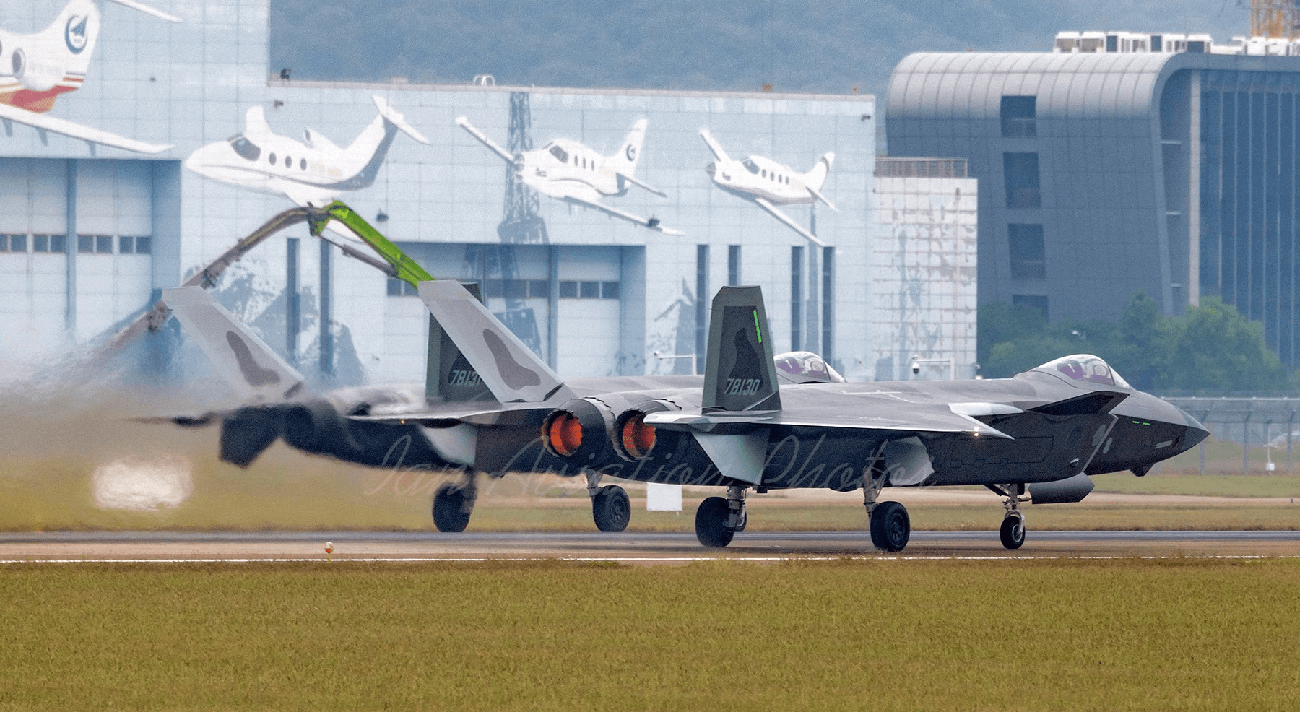A new set of claims made by a PLAAF pilot suggest China’s most advanced J-20 stealth fighter aircraft flew over Taiwan’s airspace without getting intercepted by Taipei’s Air Force.
China’s PLA Air Force (PLAAF) has recently stepped up its incursions into the Taiwanese Air Defense Identification Zone (ADIZ). On January 15, Taiwan’s National Ministry of Defense (MND) stated that PLAAF had sent its fighters on at least seven occasions last week.
While all the PLAAF fighter jets flying close to Taiwan are regularly monitored by the island’s Air Force, there may have been an instance when the service could not intercept China’s fifth-generation stealth fighter jet flying close to its airspace.
Captain Yang Juncheng of the “Wang Hai” brigade of the PLA Air Force recently told Chinese Central Television (CCTV) that he flew over Taiwan, overseeing the entire island from his cockpit. The pilot informed the channel that he flew over Bashi Channel, Miyako Strait, and Tsushima Strait in the East China Sea.
Yang said, “When I was flying the fighter plane Treasure Island of the motherland, I could see the entire coastline and mountains of the Treasure Island. At that moment, I was proud and proud [sic].”
The J-20 has patrolled the airspace near Taiwan Island. However, the Taiwan Air Force has never announced the discovery of the J-20. ? pic.twitter.com/GgsTlWfiUy
— 彩云香江 (@louischeung_hk) January 16, 2023
However, Taiwan’s MND has not officially acknowledged a J-20 flight near its airspace. The MND regularly publishes data about Chinese aerial and maritime incursions on its official Twitter handle. This could mean that either the island forces could not intercept the J-20 or chose to withhold that information.
Yang further told the channel, “I said to myself at that time, I will fly over in the future! There is no such thing as the Taiwan Strait. This line or that line!”
The statement references the median line, an imaginary buffer that runs down the Taiwan Strait between Taiwan and China. While the line has helped keep the peace for a long time, it has increasingly become irrelevant as Beijing asserts its sovereignty over self-ruled Taiwan and has vowed to integrate it with the Chinese mainland.
J-20 Is Fast Becoming PLAAF’s Backbone
In August last year, China deployed the J-20 fighters for the first time in joint military exercises conducted by the PLA as tensions soared after US House Speaker Nancy Pelosi’s planned visit to Taiwan.
At the time, the fighter took off from an airfield under the Eastern Theater Command and conducted missions including joint blockade, sea assault, land attack, air superiority, and live-fire shooting of precision weapons.
During this time, PLAAF warplanes like J-11, J-16, and Su-30 entered Taiwan’s ADIZ, but there was no communication about a J-20 undertaking a flight over or around Taiwan. Later in November, the J-20 was publicly shown at the Zhuhai Air Show, where two aircraft had already landed and parked for a while.
Speaking to China Central Television (CCTV) on November 8, J-16 pilot Zhang Yang said, “The J-20, J-16, and J-10C are the three current main fighter jets (of the Chinese air force). The three models are utilized together, mainly with the J-20’s great capacity of situational awareness guiding the two other models, while the J-16 and J-10C exert their firepower superiority.”
The J-20 is electronically more advanced than Generation 4++ jets and has essentially become the mainstay of PLAAF.
The aircraft has various sensors to help pilots make the best tactical and combat judgments possible. In addition, the emphasis on such improved situational awareness is an element of a developing—and possibly now established—belief in “intelligentized combat” by the Chinese military.
It is pertinent to note that the J-20 cannot carry weapons outside of its internal and ventral bays to maintain stealth which is why the J-16 and J-10 payload capacity come into play. Utilizing its stealth, the J-20 focuses more on situational awareness and observation, relaying information to the J-16 and J-10 “missile trucks” as needed.

The J-20 has been predicted to behave like a “sniper,” using its near-invisibility to evade fighter screens and eliminate weak targets like airborne early warning planes and air-to-air refueling tankers.
The J-20 is likely equipped with highly sophisticated data processing and sensor fusion systems, allowing it to gather data from other friendly assets like fighters, drones, early warning aircraft, satellites, and electronic warfare (EW) units.
The J-20’s Chief Designer, Yang Wei, earlier told Global Times in an interview, “Information has now become the deciding factor, as modern fighter jets focus on gaining more information with the help of AESA radars and data chains, while also reducing opponents’ ability to gain information, including using stealth technology and electronic countermeasures.”
This is why the J-20 has been dispatched for patrols near Taiwan and elsewhere. Previously, EurAsian Times had reported that the aircraft began training patrols in the East China Sea and the South China Sea. The fact that the Taiwanese forces could not intercept the J-20 near its airspace could be a vindication of the J-20’s stealth profile.
The aircraft has now been delivered to all theater commands of the People’s Liberation Army and has essentially become the anchor of Chinese operations in the region.
- Contact the author at sakshi.tiwari9555 (at) gmail.com
- Follow EurAsian Times on Google News




